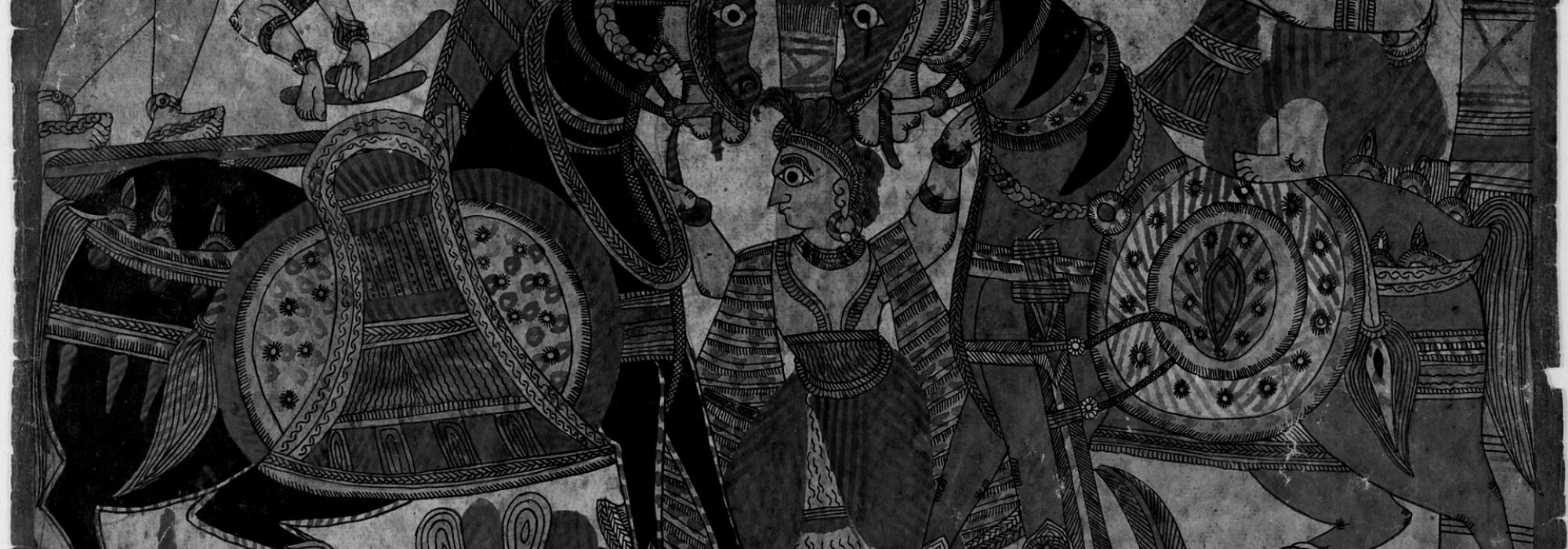After casting aspersions on the authenticity of the Great War, Kosambi goes on to examine the ethics of the Gita as if the war happened exactly as narrated by the Mahabharata (emphasis is mine):
“...the Gita as it stands could not possibly help any ksatriya in an imminent struggle, if indeed he could take his mind off the battle long enough to understand even a fraction thereof. The ostensible moral is: “Kill your brother, if duty calls, without passion; as long as you have faith in Me, all sins are forgiven.” Now the history of India always shows not only brothers but even father and son fighting to the death over the throne, without the slightest hesitation or need for divine guidance.”
(M&R, p.22)
From the testimony of the events that enfold in the Mahabharata, clearly the Gita helped at least one kshatriya – Arjuna. Consider Krishna’s exhortation in the second chapter about losing grace, about the immortality of the soul, about the importance of doing duty without being motivated by results – all these are inspiring for anyone, and specially a kshatriya. And clearly, a text of universal wisdom like the Gita is applicable to all, everywhere, always.
[contextly_sidebar id="nDpLhzFVY18UI2FaSVR59dVw2TbJKOVS"]Further, in a war, it is fair to kill the opponents. It wasn’t as if the Kauravas and Pandavas suddenly descended on the battlefield. The Pandavas left no stone unturned to ensure peace in the land. There are about 30 chapters in the Udyoga Parva / Book 5 of the Mahabharata that are wholly devoted to the peace process but there are only 18 chapters in the Gita, of which hardly 5% of the verses speak about war.
(Note: Kosambi was a Marxist historian who had unreserved adulation for the Buddha. It’s strange that neither is he disturbed by the number of wars waged in the name of Communism/Marxism nor does he recollect the Buddha telling the Licchavis that unless they are ever-ready for war against Ajatashatru, they can never have peace.)
The Mahabharata clearly shows that it was Duryodhana’s obstinacy that resulted in the war. In fact, Yudhisthira pleads:
“Even this will end the quarrel. Tell Suyodhana to give his five brothers just five villages. O Sañjaya, let there be peace between us and our cousins. Please tell him – Let brothers follow brothers, let fathers unite with sons. Let us mingle with them in merry laughter. With cheerful hearts let us make peace.”
(Ganguli, Kisari Mohan. The Mahabharata of Krishna-Dwaipayana Vyasa (1883-1896). Udyoga Parva / Book 5, Section 31. 18 Dec. 2010 <http://www.sacred-texts.com/hin/maha/index.htm>)
Duryodhana, on hearing this, tells Bhishma:
“I challenge the Pandavas to battle, without depending upon you, Drona, Ashvatthama, or Sanjaya, or Vikarna, or Kambhoja, or Krpa, or Vahlika, or Satyavrata, or Purumitra, or Bhurishrava, or others of your group. Just me and Karna, O grandfather, are prepared to celebrate the yajna of battle with all the necessary rites, making Yudhisthira the sacrificial animal. In that yajna, my chariot will be the altar; my sword will be the smaller ladle; my mace, the large one, for pouring offering; my armor will be the assembly of spectators; my four steeds will be the four rtviks; my arrows will be the blades of kusha grass; and fame will be the ghee. O king, performing, in honour of Yama, such a yajna in battle, the ingredients of which will all be furnished by ourselves, we will return victoriously covered with glory, after having killed our foes... Either I, slaying the Pandavas, will sway this earth, or the sons of Pandu, having killed me, will enjoy this earth. I will sacrifice my life, kingdom, wealth, everything, but would not be able to live side by side with the Pāṇḍavas. I will not surrender to the Pandavas even that much of land which may be covered by the sharp point of a needle.”
(Ibid. Section 58)
So we are not dealing with ‘brothers’ here, but with enemies, who have instigated the war in the first place. (For an elaborate discussion on the Gita and warfare, see Does the Bhagavad-Gita Advocate War?) Even the Rigveda says, “The enemy who wants to kill us – he maybe a stranger or one of us. Let the gods destroy him! My prayer is my armor!” (RVS 6.75.19)
Violence is a part of life. In the last five thousand years of human history, there has not been a single year that has not seen a war. Krishna embraces life with its peace and its violence. He is not one to push violence under the carpet and pretend that there is peace. He is also not one who wants to constantly engage in warfare. Further, no religion or ideology has been successful in preventing war. Has atheism stopped war? Has communism stopped war? Though an atheist and a communist, Kosambi will have to concur that his own preferred systems of faith have failed miserably at preventing violence. If anything, they have amply contributed to it.














































Comments